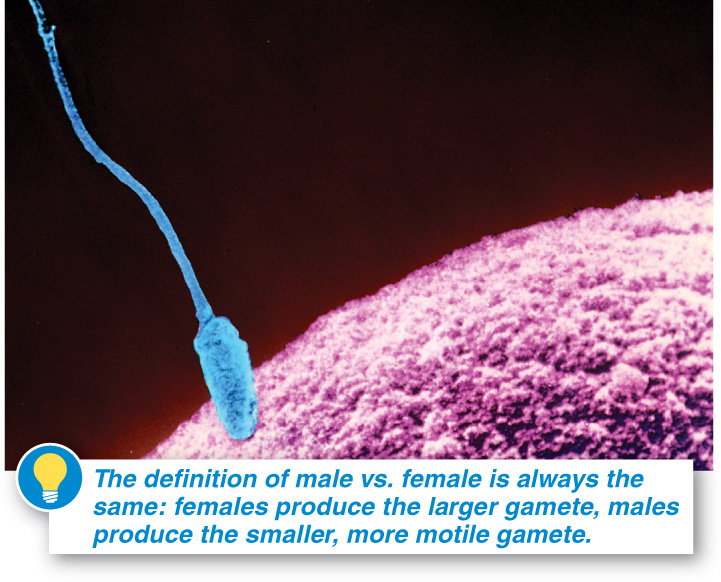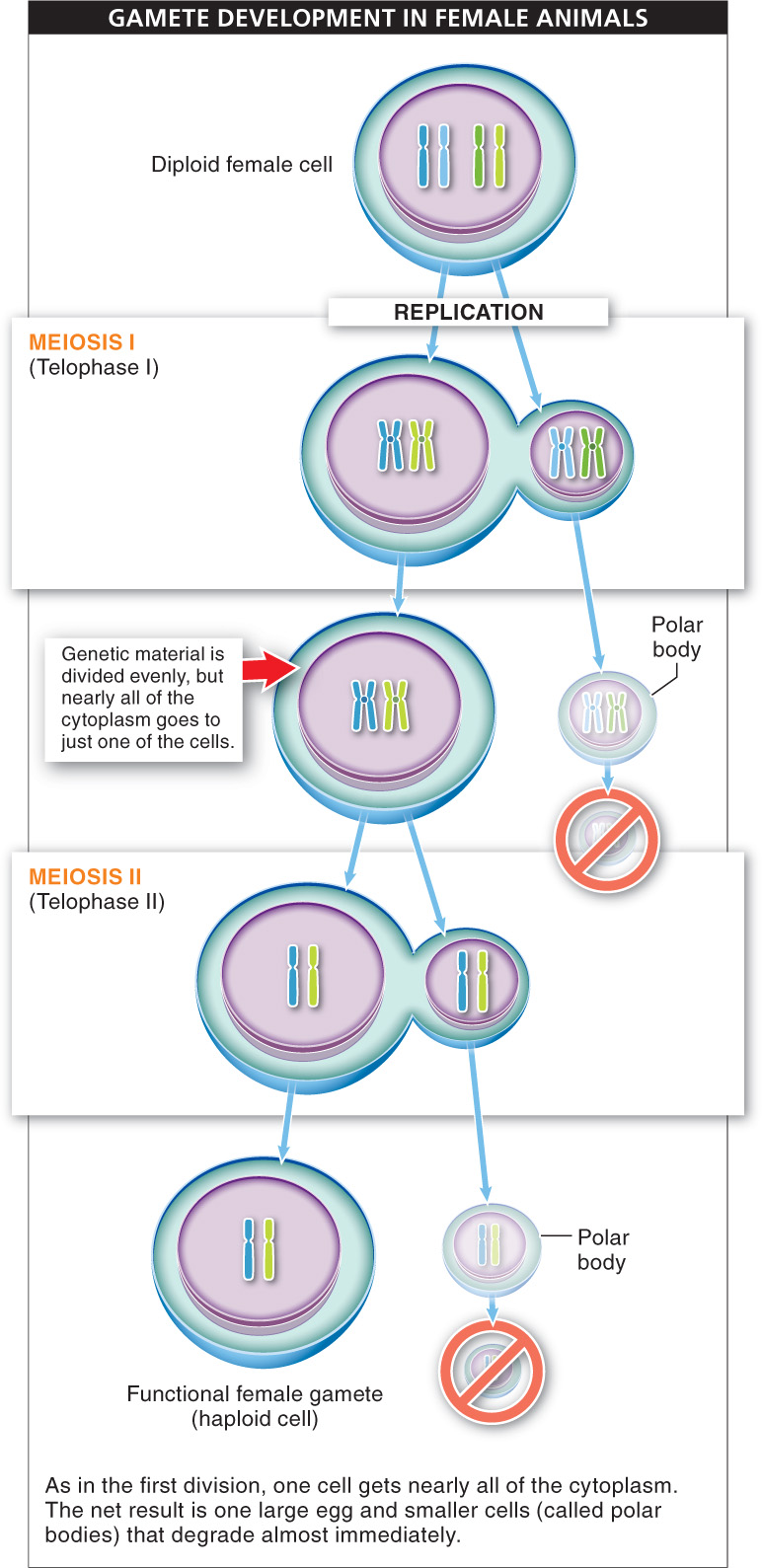No matter how small or large they are, no matter whether they’re plants or animals, for all sexually reproducing organisms there is just one way to distinguish males from females. Regardless of the species, the defining feature is always the same (and if you’re thinking of anything visible to the naked eye, you’re wrong). When there are two sexes—


The female gamete is larger than the male gamete because it has more cytoplasm. During the production of sperm, the two divisions occur just as described in Section 6-
26
The first division occurs just as described in Section 6-
As in the first division, one of the new cells gets nearly all of the cytoplasm and the other gets almost none, forming another polar body. The net result of meiosis in the production of eggs is one large egg with lots of cytoplasm and two or three small polar bodies with very little cytoplasm that degrade and never function as gametes (FIGURE 6-26).
Ultimately, whether eggs or sperm are produced, each gamete ends up with just one copy of each chromosome. That way, the fertilized egg that results from the fusion of sperm and egg carries two complete sets of chromosomes, so the developing individual will be diploid. The extra cytoplasm carried by the egg contains a large supply of nutrients and other chemical resources to help with the initial development of the organism following fertilization.
TAKE-HOME MESSAGE 6.11
In species with two sexes—
How does gamete formation in males differ from gamete formation in females?
During the formation of male and female gametes (sperm and egg, respectively), the segregation of chromosomes is similar, but the division of the cytoplasm is not. Cytoplasm is divided equally into four gametes during sperm production; however, in egg production, nearly all of the cytoplasm is concentrated into a single egg.
27